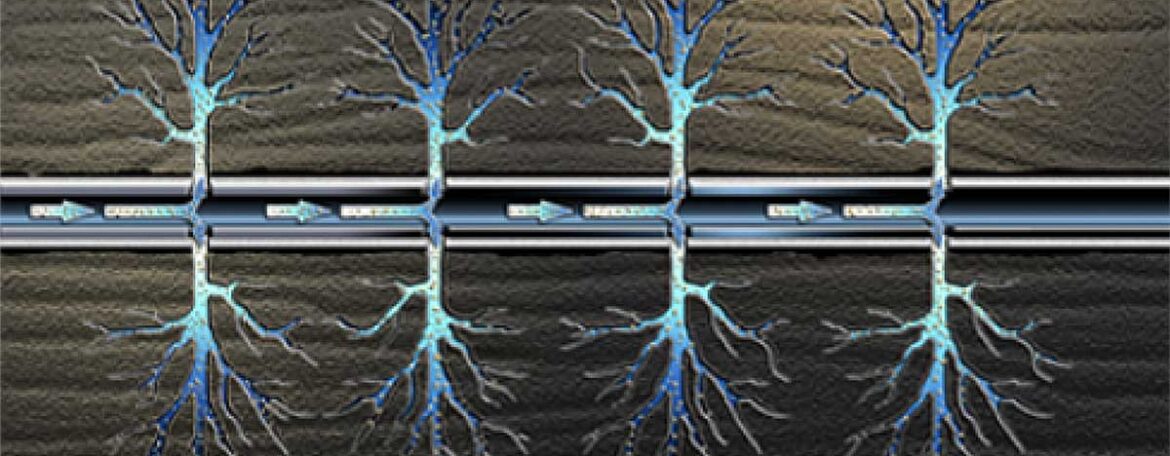Herein this post, we discussed the meaning of Hydraulic fracturing, the history, fracture geology and also the fracturing process.
What is Hydraulic fracturing?
Hydraulic fracturing, also known as fracking, is a process used to extract oil and natural gas from underground rock formations.
Hydrofracturing, or hydrofracking is a well stimulation technique involving the fracturing of formations in bedrock by a pressurized liquid. The process involves the high-pressure injection of “fracking fluid” (primarily water, containing sand or other proppants suspended with the aid of thickening agents) into a wellbore to create cracks in the deep-rock formations through which natural gas, petroleum, and brine will flow more freely. When the hydraulic pressure is removed from the well, small grains of hydraulic fracturing proppants (either sand or aluminum oxide) hold the fractures open.
History of Hydraulic Fracturing
Fracking has its roots in the 1940s, when the first experimental wells were drilled in the United States. However, it wasn’t until the 1990s that the technology advanced significantly, leading to its widespread adoption in the early 2000s.
Hydraulic fracturing began as an experiment in 1947, and the first commercially successful application followed in 1949. As of 2012, 2.5 million “frac jobs” had been performed worldwide on oil and gas wells, over one million of those within the U.S. Such treatment is generally necessary to achieve adequate flow rates in shale gas, tight gas, tight oil, and coal seam gas wells. Some hydraulic fractures can form naturally in certain veins or dikes. Drilling and hydraulic fracturing have made the United States a major crude oil exporter as of 2019, but leakage of methane, a powerful greenhouse gas, has dramatically increased. Increased oil and gas production from the decade-long fracking boom has led to lower prices for consumers, with near-record lows of the share of household income going to energy expenditures.
Fracture Geology
Mechanics
Fracturing rocks at great depth frequently become suppressed by pressure due to the weight of the overlying rock strata and the cementation of the formation. This suppression process is particularly significant in “tensile” (Mode 1) fractures which require the walls of the fracture to move against this pressure. Fracturing occurs when effective stress is overcome by the pressure of fluids within the rock. The minimum principal stress becomes tensile and exceeds the tensile strength of the material.
Veins
Most mineral vein systems are a result of repeated natural fracturing during periods of relatively high pore fluid pressure. The effect of high pore fluid pressure on the formation process of mineral vein systems is particularly evident in “crack-seal” veins, where the vein material is part of a series of discrete fracturing events, and extra vein material is deposited on each occasion. One example of long-term repeated natural fracturing is in the effects of seismic activity.
Dikes
Minor intrusions in the upper part of the crust, such as dikes, propagate in the form of fluid-filled cracks. In such cases, the fluid is magma. In sedimentary rocks with a significant water content, fluid at fracture tip will be steam.
Process of Hydraulic Fracturing
- Exploration and land acquisition: Identify potential drilling sites and secure leases from landowners.
- Well drilling: Drill a vertical wellbore, followed by a horizontal section into the target rock formation.
- Casing and cementing: Line the wellbore with steel casing and cement to prevent leakage and ensure structural integrity.
- Perforation: Create small holes in the casing to allow the fracking fluid to enter the rock formation.
- Fracturing: Pump a mixture of water, sand, and chemicals (fracking fluid) into the wellbore at high pressure, causing the rock to fracture and release the hydrocarbons.
- Flowback and production: Allow the released hydrocarbons to flow back up the wellbore for collection and processing.
- Well completion: Install production equipment and prepare the well for long-term production.
Uses of Hydraulic Fracturing
Hydraulic fracturing is used to increase the rate at which substances such as petroleum or natural gas can be recovered from subterranean natural reservoirs. Reservoirs are typically porous sandstones, limestones or dolomite rocks, but also include “unconventional reservoirs” such as shale rock or coal beds. Hydraulic fracturing enables the extraction of natural gas and oil from rock formations deep below the earth’s surface (generally 2,000–6,000 m (5,000–20,000 ft)), which is greatly below typical groundwater reservoir levels. At such depth, there may be insufficient permeability or reservoir pressure to allow natural gas and oil to flow from the rock into the wellbore at high economic return.

